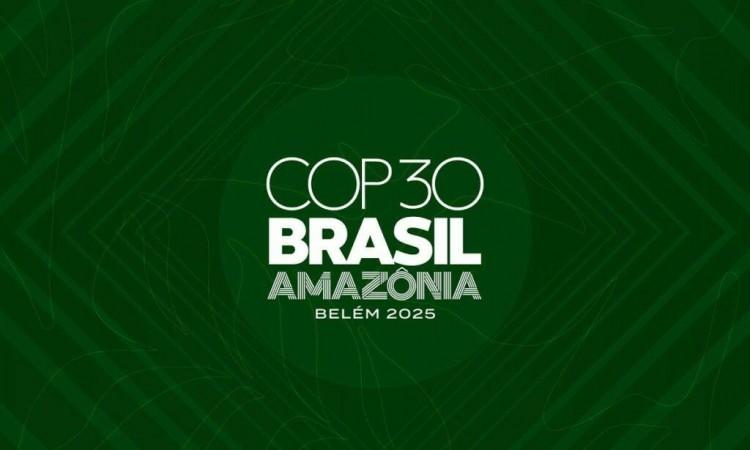
Today, October 23, 2025, as global headlines herald India's climb to ninth place in worldwide forest cover, the United Nations' Global Forest Resources Assessment 2025 reveals a bittersweet truth: the nation's 191,000-hectare annual net gain, ranking third globally, underscores Asia's unique progress against a backdrop of 500 million hectares lost planet-wide since 1990. Shared at the 6th World Congress on Agroforestry in Kigali, Rwanda, under the banner "Agroforestry for People, Planet & Profit," this milestone arrives with a warning: global deforestation, though slowed to 10.9 million hectares yearly, still carves away irreplaceable primary forests.
With COP30 in Belém, Brazil, weeks away where the Tropical Forest Forever Facility (TFFF) promises $5 - 10 billion annually to protect standing forests. India's ascent offers a beacon, but the world's woodlands teeter on a precipice, demanding urgent, collective resolve.
"Every step forward in India shows what's possible, but global losses remind us how far we still must go." – Navroz K. Dubash, Centre for Policy Research
Global Deforestation's Grim Toll
Just over a week ago, wildfires tore through 200,000 hectares of Brazil's Amazon, releasing CO2 equivalent to a mid-sized nation's annual emissions. This was no outlier; the Forest Declaration Assessment 2025 reports 8.1 million hectares of forest larger than Ireland lost globally in 2024, with tropical regions bearing 94% of the burden. At the halfway mark to the 2030 goal of halting deforestation, set by 145 nations in Glasgow's 2021 pledge, we're 63% off course. Tropical moist forests, cradling 80% of terrestrial biodiversity, are vanishing fastest, driven by fires and agricultural expansion, threatening climate stability and species survival.
"The tropics are the planet's heartbeat, and we're letting it falter hectare by hectare." – Frances Seymour, World Resources Institute
Signs of Progress Amid Peril Yet, Hope Flickers
The UN's 2025 forest assessment confirms deforestation rates have halved since the 1990s, dropping from 17.6 to 10.9 million hectares annually, thanks to efforts in nations like India and China. On October 20, investors managing $3 trillion demanded governments reverse ecosystem degradation by 2030, citing risks to markets and food security. Brazil's upcoming TFFF, set to debut at COP30, aims to channel billions to preserve tropical forests, rewarding stewardship over exploitation. These are footholds for change, but forests remain the climate fight's front line, demanding bolder action.
"Slowing the decline is progress, but only halting it will secure our future." – Mette Wilkie, FAO Forestry Division
The Drivers of Destruction
Forests anchor global stability, sequestering 15 gigatons of CO2 yearly and sustaining a billion livelihoods. Yet, 2024 saw 6.73 million hectares 83% of losses consumed by fires, often sparked for agricultural clearing and worsened by climate-driven droughts. Over the past decade, agriculture, fueled by $400 billion in subsidies for soy, beef, and palm oil, has driven 86% of deforestation. Brazil lost 2.5 - 3 million hectares, its Amazon fires emitting 800 million tons of CO2. Bolivia's losses spiked 200%, Indonesia's palm estates eroded Sumatra, and the Congo Basin shed 0.6 - 0.8 million hectares to logging and farming.
"Each felled tree is a subsidy for short-term gain, paid in long-term calamity." – Rachel Kyte, Climate Policy Expert
Human and Ecological Costs
The toll is devastating. Deforestation has claimed half a million lives over two decades through intensified heatwaves and eroded soils that starve communities. In 2024, 2.2 million hectares of
Key Biodiversity Areas vanished in the Amazon, imperiling species like jaguars and pink river dolphins. Since the Paris Agreement, banks have reaped $26 billion financing deforestation's culprits cattle, soy, and pulp industries pocketing $7 million daily. This isn't progress; it's a subsidized unraveling of ecosystems and human resilience.
"Losing forests means losing lives, species, and the stability we take for granted." – Inger Andersen, UN Environment Programme
India's Remarkable Strides
India offers a counterpoint. Ranking third globally for net forest gains, it added 191,000 hectares yearly from 2015–2025, with 72.74 million hectares 22% of its land now under canopy, ninth worldwide. The Green India Mission targets 5 million hectares restored by 2030, while the Compensatory Afforestation Fund has replanted 2 million. The Van Dhan Yojana empowers 300 million forest-dwellers with sustainable non-timber produce markets, blending ecological and social gains, positioning India as a model for the Global South.
"India's forests are proof that ambition can reshape landscapes and livelihoods." – Bhupender Yadav, India's Environment Minister
Challenges Beneath the Canopy
Yet, India's progress masks flaws. Annual gross losses of 150,000 hectares, 95% from natural forests in the Northeast and Andaman, are obscured by monoculture plantations like eucalyptus, which inflate gains but erode biodiversity. Forests absorb 1.41 gigatons of CO2 but store only 0.9, leaking the rest. The Forest Rights Act, meant to secure 200 million Adivasi stewards, sees just 3% of claims settled. Urban sprawl, mining, and 2025's Uttarakhand floods linked to Himalayan deforestation signal that India's gains risk being cosmetic without deeper reform.
"Numbers alone don't tell the story true restoration demands ecological and social integrity." – Sunita Narain, Centre for Science and Environment
India's Leadership Opportunity
India's duality gains alongside losses offers a unique platform. Committed to restoring 26 million hectares under the Bonn Challenge and creating a 2.5 - 3 gigaton CO2e sink by 2030, India can lead by example. Northeast agroforestry integrates jhum farming with carbon credits, sustaining yields while sequestering emissions. Sundarbans' mangrove restoration protects 4.4 million from cyclones, marrying resilience with equity. Critics note skewed reporting favoring plantations, but India's scalable models could redefine conservation if paired with transparent metrics and Indigenous inclusion.
"India can pioneer a path where forests thrive for both climate and communities." - Jamison Ervin, UNDP
Biodiversity A Global Turning Point
The greatest opportunity lies in community-led restoration, scaled by COP30's TFFF, which could restore 100 million hectares by 2030, sequestering 10–15 gigatons of CO2 and creating 20 million jobs. Redirecting $400 billion in harmful subsidies to green bonds and REDD+ programs, as seen in Costa Rica and Ghana, makes protection profitable. Corporates can gain: Unilever's restoration pledge yields 10–20% premiums on certified goods; blockchain traceability sidesteps EU Deforestation Regulation fines, tapping a $150 billion sustainable market. Banks can shift from $26 billion in deforestation profits to blended finance, cutting emissions with high returns.
"Restoration is an economic engine, not a cost, for a thriving planet." – Pavan Sukhdev, WWF International
COP30's Urgent Mandate
COP30 in Belém must surpass Glasgow's unfulfilled promises. Despite risks from delayed EU laws and potential U.S. retrenchment, Brazil's TFFF and the Global Forest Vision 2025 offer a roadmap: binding targets, subsidy reform, Indigenous rights, and real-time FAO-FERM monitoring. India, yet to back the New York Declaration on Forests, should lead by embedding degradation metrics in NDCs, fast-tracking Forest Rights Act claims, and seeding TFFF funds. Environment Minister Bhupender Yadav's team must send not just diplomats but Adivasi leaders, entrepreneurs, and scientists to champion the Global South.
"COP30 is the world's chance to make forests the bedrock of climate justice." – Major General Dr Dilawar Singh.
[Major General Dr Dilawar Singh is an Indian Army veteran who has led the Indian Army's Financial Management, training and research divisions introducing numerous initiatives therein. He is the Senior Vice President of the Global Economist Forum AO ECOSOC, United Nations and The Co President of the Global Development Bank.]

















